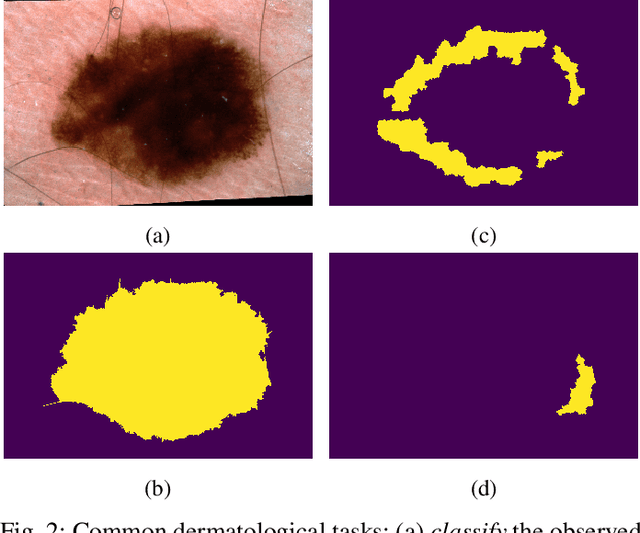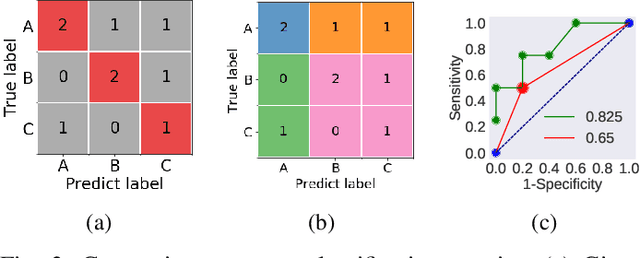Visual Diagnosis of Dermatological Disorders: Human and Machine Performance
Paper and Code
Jun 04, 2019



Skin conditions are a global health concern, ranking the fourth highest cause of nonfatal disease burden when measured as years lost due to disability. As diagnosing, or classifying, skin diseases can help determine effective treatment, dermatologists have extensively researched how to diagnose conditions from a patient's history and the lesion's visual appearance. Computer vision researchers are attempting to encode this diagnostic ability into machines, and several recent studies report machine level performance comparable with dermatologists. This report reviews machine approaches to classify skin images and consider their performance when compared to human dermatologists. Following an overview of common image modalities, dermatologists' diagnostic approaches and common tasks, and publicly available datasets, we discuss approaches to machine skin lesion classification. We then review works that directly compare human and machine performance. Finally, this report addresses the limitations and sources of errors in image-based skin disease diagnosis, applicable to both machines and dermatologists in a teledermatology setting.
 Add to Chrome
Add to Chrome Add to Firefox
Add to Firefox Add to Edge
Add to Edge